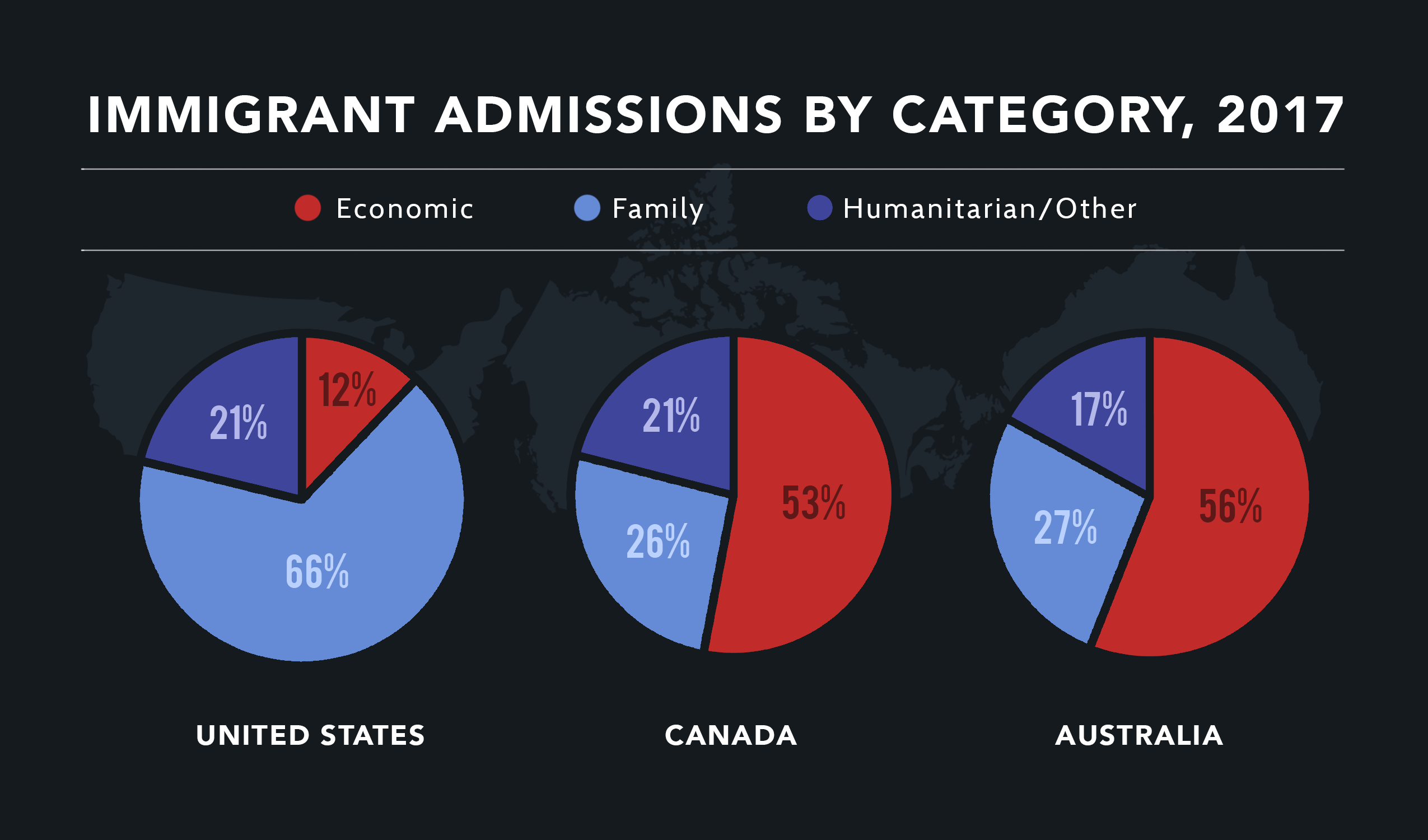
Immigration is one of the most important issues to voters in the lead-up to the 2020 election.
The focus on immigration policy will likely only intensify as the crisis at the southern border persists, the federal government conducts large raids to remove undocumented immigrants, and the Trump Administration moves to restrict legal immigration.
Given the national sense of urgency to fix our broken immigration laws, it is important to understand not only the magnitude of the problem, but why it’s occurring. To that end, the American people should be aware of two key facts that are helping to fuel the crisis we are experiencing today.
The first fact is that the U.S. government has failed to adapt to the increasing number of families fleeing to the United States. The second fact is that the U.S. immigration system, as it is currently designed, incentivizes illegal immigration. Both need to change if we are going to solve the immigration crisis.
Fact #1: There are more families fleeing to the U.S.
According to the latest available data, there were approximately 10.5 million undocumented immigrants in the United States in 2017. While this number is down from 11 million in 2015, 760,000 people have been apprehended crossing the border illegally this year. This is more than twice the number apprehended at this point in 2018. It is also a number which is driven by a swell of asylum seekers fleeing violence in Honduras, Guatemala, and El Salvador. While the number of illegal border crossers has certainly increased in 2019, it is on par with pre-2007 levels. It is also substantially lower than in 2000, when 1.4 million individuals were apprehended. The types of individuals crossing the border, however, have changed: two-thirds of border crossers this year have either been families or unaccompanied children compared to just 13 percent in 2013.
760,000 people have been apprehended crossing the border illegally this year. This is more than twice the number apprehended at this point in 2018.
In response to the increase in illegal crossers and the change in their makeup, Congress passed an emergency federal aid bill providing $4.6 billion to federal agencies on the border. This funding is on top of the $4.7 billion allocated to U.S. Border Patrol in 2019, a ten-fold increase from the early 1990s. The additional aid is undoubtedly beneficial, but it will not solve the crisis; more immigration officers and judges are needed to alleviate the backlog of 913,000 immigration court cases currently pending. This backlog is responsible for an average two-year wait time before asylum seekers’ cases are heard, contributing to the dangerous and overcrowded conditions at detention facilities in both the United States and Mexico.
The Trump Administration has also sought to assuage the crisis by restricting eligibility for asylum with a slew of new regulations. Unfortunately, these regulations are riddled with problems and almost all have been overturned by federal courts. First, restricting asylum eligibility runs counter to U.S. obligations to hear asylum claims under both domestic and international law. The administration’s strategy would just push the border crisis down into Mexico, a country less equipped to handle it. Second, pulling back foreign aid from Central America exacerbates the poor conditions driving people toward the United States. Instead, the administration should address the border crisis at its root with investment that promotes stability and economic development in the countries experiencing violence.

Fact #2: Our current system incentivizes illegal immigration
In addition to the failure at the border, the failure of the legal immigration system is also driving illegal immigration. Unless you have a family member in the United States, the current system makes it incredibly difficult to immigrate legally. This is by design: Congress laid the foundation for modern day U.S. immigration policy back in 1965, when the immigration system was designed for family reunification. As a result, two-thirds of green cards given out each year are awarded through family sponsorship. The next-highest number of visas are to asylum seekers and refugees (13 percent), followed by employer-sponsored immigrants (12 percent) and diversity immigrants (5 percent). This stands in stark contrast with nations such as Australia and Canada, where more than half of annual immigration flows is for economic reasons.
Two-thirds of green cards given out each year are awarded through family sponsorship. This stands in stark contrast with nations such as Australia and Canada, where more than half of annual immigration flows is for economic reasons.
In the United States, employer-sponsorship is largely the only avenue of legal immigration for individuals with no family ties and who do not qualify for refugee status due to fear of persecution. Only 140,000 economic visas are awarded each year, however, and over half are given to the spouses and minor children of principal applicants, leaving less than 70,000 for workers. This setup makes it nearly impossible for individuals who want to move to the United States for work to legally do so – even if they are qualified to contribute to the economy – incentivizing unauthorized border crossings. It also incentivizes U.S. companies to hire undocumented workers, especially in sectors like agriculture and construction that are facing labor shortages.
The best way to reduce unauthorized border crossings moving forward would be to expand the pathways for legal immigration. Moreover, the United States needs a new approach that recognizes immigration as a tool of economic growth. Research shows that immigrants have higher labor force participation rates than U.S.-born workers, are more likely to start their own businesses, and boost both economic and productivity growth. Immigrants are also necessary to prevent economic decline: in the absence of immigration, low birth rates would cause the U.S. population, and therefore the U.S. labor force, to shrink.
The American Action Forum proposes a new strategy that focuses legal immigration on the economics of a productive labor force. Our proposal recognizes the value of both high-skilled and low-skilled workers – using a points system to identify immigrants with desirable characteristics by their education credentials, English language ability, and skills, or through proven work histories. Furthermore, instead of relying on arbitrary immigration limits set by Congress, we propose that the level of immigration should be equal to the number of qualified applicants seeking entry. This way, immigration policy can be utilized as the vital economic tool that it is.
The United States faces a new immigration challenge. To overcome it, we must rethink our asylum processes at the border and our deficient legal immigration system. Both are working against us during a time when immigration could not only be used for humanitarian purposes and family reunification, but also as a powerful force for economic growth.
Jackie Varas serves as the Director of Immigration and Trade Policy for the American Action Forum.




